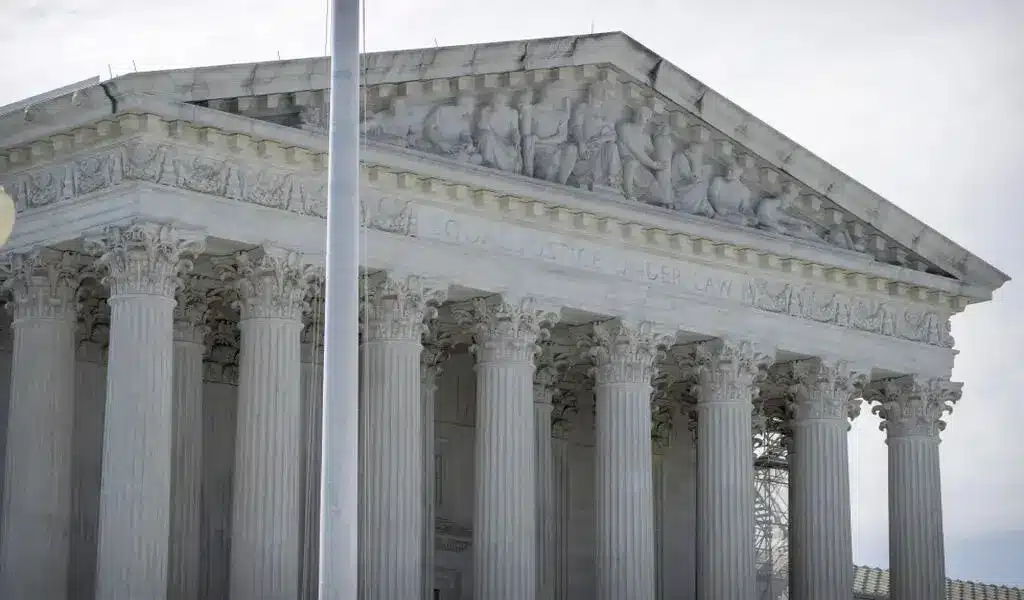News
Surviving the streets of North Korea – Video
NORTH KOREA – The first time Yoon Hee was abandoned, she was an infant. She was born in a village near North Korea’s sacred Mount Baekdu, where the country’s lore claims its founder, Kim Il Sung, led the fight for independence and his oldest son, Kim Jong Il, was born.
But the similarities between Yoon Hee and her homeland’s rulers end there.
Abandoned North Korean childrenSix months after her birth, her parents divorced and left Yoon Hee in the care of a friend.
The second time she was abandoned, Yoon Hee was 8 and had gone back to live with her mother.
One day, her mother told her she had somewhere to go. “She never came back,” Yoon Hee said.
Yoon Hee had no choice but to live alone in North Korea. So she did what many abandoned North Korean children do — living on the streets, nearly freezing to death in the winters, begging for mercy, plucking grass for food and crying so hard at night only the pain in her face could stifle her tears.
Yoon Hee stayed in the same neighborhood as her mother in the city of Hyesan, hoping they could live together again.
“I sometimes ran into her on the streets,” Yoon Hee said, “but I couldn’t ever get a warm feeling from her.”
One time when they met, Yoon Hee said, “she told me she was already having a hard time living by herself, so she couldn’t live with me.” But Yoon Hee was undeterred. “I had a hope.”
Death by electrocution
Amid tensions in the Korean peninsula, much of the focus has fallen on deciphering the next moves of Pyongyang’s new leader, Kim Jong Un.
But all this belies a humanitarian crisis in North Korea, a country that boasts of its military strength and nuclear capabilities and yet has no place for homeless orphans.
“There are many children like me who die,” said Hyuk Kim, who fled North Korea in 2011, nearly a decade after becoming an orphan.
In the punishing winters, Hyuk and other orphans would break into sheds containing electric transformers near factories and markets to find a warm place to sleep.
“Many children accidentally end up touching the transformers while sleeping and die,” said Hyuk, who asked that his real name not be used for the safety of family members still in North Korea.
As Hyuk dozed off each night curled next to a transformer, he would try to stay as still as possible — willing himself not to move in his sleep.
China treats the north korean refugees as economical migrants and deports them back to North Korea were they often face execution or concentration camp for defection“I thought I would live forever this way,” he said.
How a Camp 14 escapee swayed human rights discourse
Glimpse into the underbelly
Yoon Hee, who’ve lobbied for years to pave the way for their adoption by Americans and others.
In January, President Obama signed the North Korean Child Welfare Act of 2012, which instructs the U.S. State Department to “advocate for the best interests of these children” — including helping to reunite families and facilitate adoptions.
The law is aimed primarily at those orphans hiding in China and other countries. Those who make it to South Korea are provided an education, a path to citizenship and even a chance at adoption.
Gwak Jong-Moon knows the pain orphans suffer. He’s the principal of Hangyeore Middle-High School, a South Korean transitional facility open only to North Korean children and teenagers.
About 50 North Koreans under the age of 24 enter South Korea every year without family, according to the South’s government. These children only make up about 2% of all North Korean defectors who enter the South.
IMPACT YOUR WORLD
Adoption in South Korea is not a common practice, but Gwak said “adopting is natural, and worthy.”
“There are some South Koreans who adopt our school’s children, although not many,” he said. “Children here with South Korean adults who don’t officially adopt, but act like their parents make unbelievable progress.”
We recently traveled to Seoul to meet some of these orphans and the people caring for them. Originally we wanted to learn more about their lives in South Korea — what it’s like trying to integrate into an alien society after living in one of the most isolated countries in the world.
We visited Gwak’s school earlier this year — on a majestic campus more fitting for a temple, tucked away in snow-crusted hills about an hour from Seoul. We also visited the Seoul home of a pastor who is raising five North Korean orphans.
In both places, we met children and teenagers scarred by their experiences. Although we could not independently confirm the details of their individual histories, advocates who work with them say they have heard consistently similar testimonies.
We also heard stories of children struggling with South Korean culture, targeted by bullies, befuddled by K-pop and puzzled by mundane tasks like managing money and taking public transportation.
But we also got a glimpse into the underbelly of the Democratic People’s Republic of Korea — from the perspective of those who occupied one of the lowest rungs of society, far removed from the idyllic vision portrayed in the nation’s propaganda.
North Korea: Our global fear and fascination
‘I am going to die’
Not long after running into her mother in the streets, Yoon Hee fell ill. Alone and 10 years old, she lay in the snow as the icy winter descended in North Korea.
Alone and 10 years old, she lay in the snow as the icy winter descended in North KoreaEventually, Yoon Hee caught what she suspects was typhoid, leaving her in a hell of fire and ice. Although she lay in the snow about two weeks, no one offered help or food.
She tried to muster her energy to sit and wiggle her fingers and toes, but her hands and feet barely budged — they were frozen in place. She could no longer move.
Surely, this was it, Yoon Hee thought. She prepared herself. “I am going to die.”
Yoon Hee would become yet another corpse rotting in the street — she had seen the frozen corpses on the roadside because no one bothered to bury bodies of strangers.
A voice interrupted her feverish daze.
A villager had appeared. Yoon Hee recognized her as a woman who was struggling to feed her own children.
The villager thrust money into Yoon Hee’s hand. Her voice was firm: “You have to survive.”
Horror, heartbreak in North Korea’s labor camps
Helping defectors escape
In North Korea, homeless children like Yoon Hee are called “kotjebes,” or flowering swallows. Like the bird, these children are free to roam, unconstrained by the country’s societal norms.
Without parents, family or schooling, they don’t have as much exposure to the state propaganda that is engrained from childhood, according to advocates. When they escape to neighboring China, it is not so much for political reasons, but to find food.
A U.N. assessment in March found that of the country’s estimated 28 million people, 16 million are chronically deprived of food.
Peter Jung is among those working on behalf of North Korea’s orphans. Based in Seoul, he leads Justice for North Korea, which describes itself as a “volunteer, non-partisan, grassroots organization” that opposes human rights violations in North Korea.
Jung first met North Korean orphans in 1998 in northern China, where he had gone to learn Mandarin.
Jung was stunned to see the stunted size and condition of North Korean orphans. “It was too shocking to believe,” Jung said. “There were children who had skin diseases and with bloated stomachs, collapsing in the streets because of malnutrition.”
Korean children have been found to be about 3 to 4 centimeters shorter than their South Korean counterparts, according to a 2009 study published in the journal Economics and Human Biology.
Nearly 28% of North Korean children suffer from stunting, according to the U.N. Office for the Coordination of Humanitarian Affairs.
Fifteen years after meeting the first of these street orphans, Jung is still helping defectors escape, working from a small, cluttered basement office in the South Korean capital.
‘Hugs and comforts’
For a decade in North Korea, Yoon Hee roamed the streets, slept in crevices and picked rice off the ground that people had dropped.
“I appreciated every single grain of rice,” she said.
Every night, she had the same concern: “Where am I going to sleep tonight? How can I survive?”
In Ryanggang province where she lived, the average monthly temperature can fall below freezing during the winter months, according to the World Food Program.
Yoon Hee learned survival skills fitting of “The Hunger Games” — where to scavenge for food, where to sleep, how to stay warm, how to keep safe. She curled into a fetal position in a nook under the windows of houses.
“Sometimes, I wrapped my feet with a plastic bag because it was too cold.”
She slept alone, except for her thoughts of her mother.
“When I almost was starved or freezing to death, the only things I wanted from her were hugs and comforts. I thought that was happiness.”
But she couldn’t recall a single hug from her mother.
Opinion: Why I fled North Korea
Surviving in a new home
Hyuk lost his mother when he was 6, then his father when he was 11.
After his father died, he lived with a group of six other orphan boys in North Hamgyong province, located at the northern most tip of the country.
“We started a fire together, but we still couldn’t sleep because it was so cold,” he said. “We just warmed ourselves with the fire at night and we mainly slept during the day when the sun was shining.
“During the night, we needed to find food to eat. We sometimes stole food from others and gathered food from here and there.”
When something went missing in the neighborhood, the blame automatically fell on Hyuk and his friends, even when they had not been involved. The children would be taken to the police station and tied to chairs, he said.
“The police would then automatically accuse us of stealing because they assume we would have stolen since we don’t have parents. They hit us, tie us up, and torture us. There was no one to defend us.”
Hyuk, now 21, attends Hangyeore Middle-High School, where he sleeps in a bed inside a heated dormitory. The school serves three warm, buffet-style meals a day, and students can pile as much food as they’d like on their metal trays.
In the school’s hallways, girls with sleek black hair and boys with long sweeping bangs are busy texting and taking pictures of themselves on their phablets — a combination smartphone and tablet. Their crisply ironed school uniforms would not be out of place at an English or American boarding school.
It’s a vastly different scene than the childhood Hyuk describes. The blur of hunger, cold and countless police beatings has been replaced by soccer and basketball.
The school, set up by the South Korean government, does not charge tuition.
The North Korean orphans who escape to South Korea often struggle to catch up in a competitive environment where their counterparts have had years of schooling and private tutoring.
While acknowledging hardships adjusting in South Korea, Hyuk said: “I am very comfortable, because I can openly say anything.”
He’s anxious about what he’ll do after he graduates from the school — maybe he’ll go into operating forklifts, Hyuk said.
A mop of shaggy bangs falls over his round face as Hyuk sits atop a table, his legs swinging freely.
“I can eat, live, and survive here.”
Scars from trauma
Most North Koreans escape by crossing the river on the northern border to China. Some street children who flee to China become easy prey to traffickers, according to human rights activists.
The girls are sold into the sex trade, or as wives for rural Chinese men. The young boys are sold as sons into Chinese families who have not been able to produce one, said Jung of Justice for North Korea.
China sends back those escapees they catch, so defectors live in hiding — fearing they’ll be imprisoned and tortured back home.
That fear can continue long after escapees have made it to South Korea.
In the home of pastor Daniel Park, we met a 13-year-old boy whose mother took him to China when he was a year old. The mother was caught and repatriated to North Korea, but the boy remained in China, where he was beaten and abused, Park said.
In Park’s Seoul home, the trauma showed. The boy, sporting a buzz cut, was skittish and jumpy around strangers and followed Park closely around the house. During mealtimes, when his foster family would gather to eat, he would take his food and hide in his bedroom and eat alone.
But Park said his habits have since improved.
Escape through China
As Yoon Hee entered adolescence in North Korea, her hopes of reuniting with her mother began to fade.
A few strangers would give money, others would give her food, shoes or clothes after taking pity on her.
“I had hope thinking that there were people out there who were willing to help me,” she said.
Yoon Hee also ran errands for neighbors to earn change.
But in 2009, the North Korean government exchanged its old currency for a new one worth just 1% of its original value. It immediately wiped out people’s savings and triggered chaos as prices for food became unreachable.
“At that time, so many people were dying,” Yoon Hee said. “If I opened my neighbor’s door, people were dead, collapsed on the floor. So many people headed for China, I thought that at least I could survive there.”
There was nothing left for her in North Korea. Her hopes of reuniting with her mother finally faded.
So she made her first escape into China. In the wintertime, the river at the border freezes, paving the way for a quick escape.
In China, she said she was caught three times by local police and each time, she was sent back to a North Korean prison. She was pummeled with fists, sticks and kicked, Yoon Hee said. But each time, she was released, she said.
In early 2010, she escaped North Korea for the fourth time and eventually met Daniel Park through underground networks of Christian activists and missionaries
Funded by donors and ministries, the networks employ brokers who help refugees cross into China, bribing and using their connections with officials and border officers.
The networks reach Laos, Thailand and Vietnam, countries near China where the authorities will not repatriate North Koreans. From there, North Koreans try to find their way to a South Korean embassy — where they are sent to Seoul — or they seek refuge in the embassy of other countries like Canada, Britain or the U.S.
Yoon Hee stayed with Park and his family in China’s Zheijiang province, further away from the North Korean border.
“She was bright even though she suffered a lot,” Park said, describing his first impressions of the orphan. “I was able to see her pains. She had gone through so many struggles even though she was very young and sometimes when we would pray for her, she wept.”
By October 2010, Park had arranged for Yoon Hee to fly into South Korea.
‘Part of the family’
In Seoul, Yoon Hee emerges from her bedroom in skinny jeans and a red, puffy vest, her nails painted bright pink. She slouches slightly, perked up by frequent texts on her yellow Samsung phone — which is bigger than her hand.
With wide almond-shaped eyes, spotless porcelain skin and silky black hair, Yoon Hee has the kind of features highly coveted in South Korea, a country obsessed with beauty and youth.
At 19, she could easily be mistaken for a middle school student in Seoul. Yoon Hee stands less than 5 feet tall.
She lives with Park, his wife, their two sons, who are toddlers and four other North Korean children — two boys and two girls.
Their permanent home in Seoul is humble. In the winter, bubble wrap is taped to the windows to keep the house warm.
The walls are scrawled with crayon doodles. Stuffed animals, toy ducks and books rest atop bookshelves and coffee tables. The children crawl over the taupe-colored sofa and scramble onto the living room table.
At times, Yoon Hee talks freely about her life. But there are some questions she’d rather not answer.
She seems more comfortable around the younger children.
And they flock to Yoon Hee as arbiter of all things toddler — toy disputes and snack requests, cries for hugs and sibling rivalries. The other children squeal and scamper around the house, but Yoon Hee rarely raises her voice with them.
“When they make mistakes, I try to show ways to fix their thinking that they can be guided well,” she said, “even though they don’t have their moms.”
Her kinship with the other orphans is forged out of hardship. Park’s two toddler sons look up to her as “unni,” or older sister.
“In this house, she’s a part of us,” Park said. “Part of the family.”
When an older child steals a toy from his younger brother, Yoon Hee scolds him.
“It’s not OK to steal your little brother’s toy,” she said. “Why did you do that?”
But as the older child sulks, Yoon Hee pulls him close and tickles him — giving love and attention that she didn’t have in her childhood.
Two years after her arrival in Seoul, Yoon Hee’s days are busy from 8 a.m. to 10 p.m. with studies and a part-time job.
She sleeps on the floor inside a pristine wood-paneled room with a white teddy bear, lying next to the other North Korean girls on pink blankets.
Sometimes, she dreams of her mother even though she hasn’t seen or talked to her in more than a decade.
“I would rather give her love than blame her,” Yoon Hee said, “even though I wasn’t loved.”
In ways, her life has been shaped by her abandonment by those who were supposed to care for her. But Yoon Hee found a new family by abandoning the place that once was home — but ultimately had nothing left to give. – By Madison Park, CNN

News
Google’s Search Dominance Is Unwinding, But Still Accounting 48% Search Revenue

Google is so closely associated with its key product that its name is a verb that signifies “search.” However, Google’s dominance in that sector is dwindling.
According to eMarketer, Google will lose control of the US search industry for the first time in decades next year.
Google will remain the dominant search player, accounting for 48% of American search advertising revenue. And, remarkably, Google is still increasing its sales in the field, despite being the dominating player in search since the early days of the George W. Bush administration. However, Amazon is growing at a quicker rate.
Google’s Search Dominance Is Unwinding
Amazon will hold over a quarter of US search ad dollars next year, rising to 27% by 2026, while Google will fall even more, according to eMarketer.
The Wall Street Journal was first to report on the forecast.
Lest you think you’ll have to switch to Bing or Yahoo, this isn’t the end of Google or anything really near.
Google is the fourth-most valued public firm in the world. Its market worth is $2.1 trillion, trailing just Apple, Microsoft, and the AI chip darling Nvidia. It also maintains its dominance in other industries, such as display advertisements, where it dominates alongside Facebook’s parent firm Meta, and video ads on YouTube.
To put those “other” firms in context, each is worth more than Delta Air Lines’ total market value. So, yeah, Google is not going anywhere.
Nonetheless, Google faces numerous dangers to its operations, particularly from antitrust regulators.
On Monday, a federal judge in San Francisco ruled that Google must open up its Google Play Store to competitors, dealing a significant blow to the firm in its long-running battle with Fortnite creator Epic Games. Google announced that it would appeal the verdict.
In August, a federal judge ruled that Google has an illegal monopoly on search. That verdict could lead to the dissolution of the company’s search operation. Another antitrust lawsuit filed last month accuses Google of abusing its dominance in the online advertising business.
Meanwhile, European regulators have compelled Google to follow tough new standards, which have resulted in multiple $1 billion-plus fines.

Pixa Bay
Google’s Search Dominance Is Unwinding
On top of that, the marketplace is becoming more difficult on its own.
TikTok, the fastest-growing social network, is expanding into the search market. And Amazon has accomplished something few other digital titans have done to date: it has established a habit.
When you want to buy anything, you usually go to Amazon, not Google. Amazon then buys adverts to push companies’ products to the top of your search results, increasing sales and earning Amazon a greater portion of the revenue. According to eMarketer, it is expected to generate $27.8 billion in search revenue in the United States next year, trailing only Google’s $62.9 billion total.
And then there’s AI, the technology that (supposedly) will change everything.
Why search in stilted language for “kendall jenner why bad bunny breakup” or “police moving violation driver rights no stop sign” when you can just ask OpenAI’s ChatGPT, “What’s going on with Kendall Jenner and Bad Bunny?” in “I need help fighting a moving violation involving a stop sign that wasn’t visible.” Google is working on exactly this technology with its Gemini product, but its success is far from guaranteed, especially with Apple collaborating with OpenAI and other businesses rapidly joining the market.
A Google spokeswoman referred to a blog post from last week in which the company unveiled ads in its AI overviews (the AI-generated text that appears at the top of search results). It’s Google’s way of expressing its ability to profit on a changing marketplace while retaining its business, even as its consumers steadily transition to ask-and-answer AI and away from search.

Google has long used a single catchphrase to defend itself against opponents who claim it is a monopoly abusing its power: competition is only a click away. Until recently, that seemed comically obtuse. Really? We are going to switch to Bing? Or Duck Duck Go? Give me a break.
But today, it feels more like reality.
Google is in no danger of disappearing. However, every highly dominating company faces some type of reckoning over time. GE, a Dow mainstay for more than a century, was broken up last year and is now a shell of its previous dominance. Sears declared bankruptcy in 2022 and is virtually out of business. US Steel, long the foundation of American manufacturing, is attempting to sell itself to a Japanese corporation.
SOURCE | CNN
News
2024 | Supreme Court Won’t Hear Appeal From Elon Musk’s X Platform Over Warrant In Trump Case

Washington — Trump Media, The Supreme Court announced Monday that it will not hear an appeal from social media platform X about a search warrant acquired by prosecutors in the election meddling case against former President Donald Trump.
The justices did not explain their rationale, and there were no recorded dissents.
The firm, which was known as Twitter before being purchased by billionaire Elon Musk, claims a nondisclosure order that prevented it from informing Trump about the warrant obtained by special counsel Jack Smith’s team violated its First Amendment rights.
The business also claims Trump should have had an opportunity to exercise executive privilege. If not reined in, the government may employ similar tactics to intercept additional privileged communications, their lawyers contended.
Supreme Court Won’t Hear Appeal From Elon Musk’s X Platform Over Warrant In Trump Case
Two neutral electronic privacy groups also joined in, urging the high court to hear the case on First Amendment grounds.
Prosecutors, however, claim that the corporation never shown that Trump utilized the account for official purposes, therefore executive privilege is not a problem. A lower court also determined that informing Trump could have compromised the current probe.

Trump utilized his Twitter account in the weeks preceding up to his supporters’ attack on the Capitol on January 6, 2021, to spread false assertions about the election, which prosecutors claim were intended to create doubt in the democratic process.
The indictment describes how Trump used his Twitter account to encourage his followers to travel to Washington on Jan. 6, pressuring Vice President Mike Pence to reject the certification, and falsely claiming that the Capitol crowd, which battered police officers and destroyed glass, was peaceful.
Supreme Court Won’t Hear Appeal From Elon Musk’s X Platform Over Warrant In Trump Case
That case is now moving forward following the Supreme Court’s verdict in July, which granted Trump full immunity from criminal prosecution as a former president.
The warrant arrived at Twitter amid quick changes implemented by Musk, who bought the company in 2022 and has since cut off most of its workforce, including those dedicated to combating disinformation and hate speech.
SOURCE | AP
News
The Supreme Court Turns Down Biden’s Government Appeal in a Texas Emergency Abortion Matter.

(VOR News) – A ruling that prohibits emergency abortions that contravene the Supreme Court law in the state of Texas, which has one of the most stringent abortion restrictions in the country, has been upheld by the Supreme Court of the United States. The United States Supreme Court upheld this decision.
The justices did not provide any specifics regarding the underlying reasons for their decision to uphold an order from a lower court that declared hospitals cannot be legally obligated to administer abortions if doing so would violate the law in the state of Texas.
Institutions are not required to perform abortions, as stipulated in the decree. The common populace did not investigate any opposing viewpoints. The decision was made just weeks before a presidential election that brought abortion to the forefront of the political agenda.
This decision follows the 2022 Supreme Court ruling that ended abortion nationwide.
In response to a request from the administration of Vice President Joe Biden to overturn the lower court’s decision, the justices expressed their disapproval.
The government contends that hospitals are obligated to perform abortions in compliance with federal legislation when the health or life of an expectant patient is in an exceedingly precarious condition.
This is the case in regions where the procedure is prohibited. The difficulty hospitals in Texas and other states are experiencing in determining whether or not routine care could be in violation of stringent state laws that prohibit abortion has resulted in an increase in the number of complaints concerning pregnant women who are experiencing medical distress being turned away from emergency rooms.
The administration cited the Supreme Court’s ruling in a case that bore a striking resemblance to the one that was presented to it in Idaho at the beginning of the year. The justices took a limited decision in that case to allow the continuation of emergency abortions without interruption while a lawsuit was still being heard.
In contrast, Texas has been a vocal proponent of the injunction’s continued enforcement. Texas has argued that its circumstances are distinct from those of Idaho, as the state does have an exemption for situations that pose a significant hazard to the health of an expectant patient.
According to the state, the discrepancy is the result of this exemption. The state of Idaho had a provision that safeguarded a woman’s life when the issue was first broached; however, it did not include protection for her health.
Certified medical practitioners are not obligated to wait until a woman’s life is in imminent peril before they are legally permitted to perform an abortion, as determined by the state supreme court.
The state of Texas highlighted this to the Supreme Court.
Nevertheless, medical professionals have criticized the Texas statute as being perilously ambiguous, and a medical board has declined to provide a list of all the disorders that are eligible for an exception. Furthermore, the statute has been criticized for its hazardous ambiguity.
For an extended period, termination of pregnancies has been a standard procedure in medical treatment for individuals who have been experiencing significant issues. It is implemented in this manner to prevent catastrophic outcomes, such as sepsis, organ failure, and other severe scenarios.
Nevertheless, medical professionals and hospitals in Texas and other states with strict abortion laws have noted that it is uncertain whether or not these terminations could be in violation of abortion prohibitions that include the possibility of a prison sentence. This is the case in regions where abortion prohibitions are exceedingly restrictive.
Following the Supreme Court’s decision to overturn Roe v. Wade, which resulted in restrictions on the rights of women to have abortions in several Republican-ruled states, the Texas case was revisited in 2022.
As per the orders that were disclosed by the administration of Vice President Joe Biden, hospitals are still required to provide abortions in cases that are classified as dire emergency.
As stipulated in a piece of health care legislation, the majority of hospitals are obligated to provide medical assistance to patients who are experiencing medical distress. This is in accordance with the law.
The state of Texas maintained that hospitals should not be obligated to provide abortions throughout the litigation, as doing so would violate the state’s constitutional prohibition on abortions. In its January judgment, the 5th United States Circuit Court of Appeals concurred with the state and acknowledged that the administration had exceeded its authority.
SOURCE: AP
SEE ALSO:
Could Last-Minute Surprises Derail Kamala Harris’ Campaign? “Nostradamus” Explains the US Poll.
-

 News4 years ago
News4 years agoLet’s Know About Ultra High Net Worth Individual
-
Entertainment2 years ago
Mabelle Prior: The Voice of Hope, Resilience, and Diversity Inspiring Generations
-
News11 years ago
Enviromental Groups Tell Mekong Leaders Lao Dam Evaluation Process Flawed
-

 Health4 years ago
Health4 years agoHow Much Ivermectin Should You Take?
-

 Tech3 years ago
Tech3 years agoTop Forex Brokers of 2023: Reviews and Analysis for Successful Trading
-

 Lifestyles3 years ago
Lifestyles3 years agoAries Soulmate Signs
-

 Entertainment3 years ago
Entertainment3 years agoWhat Should I Do If Disney Plus Keeps Logging Me Out of TV?
-

 Health3 years ago
Health3 years agoCan I Buy Ivermectin Without A Prescription in the USA?


